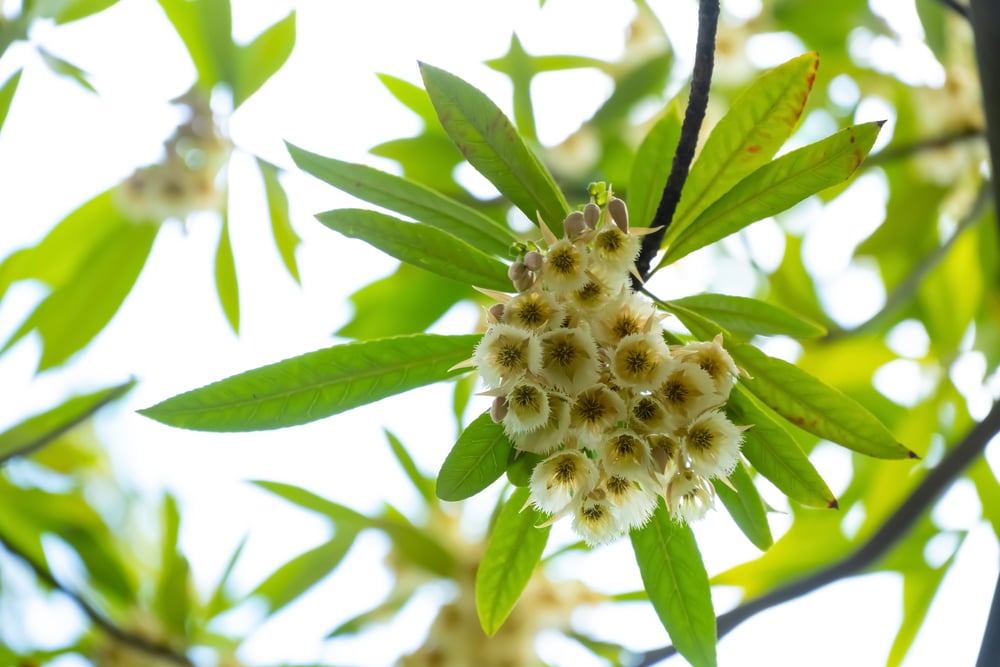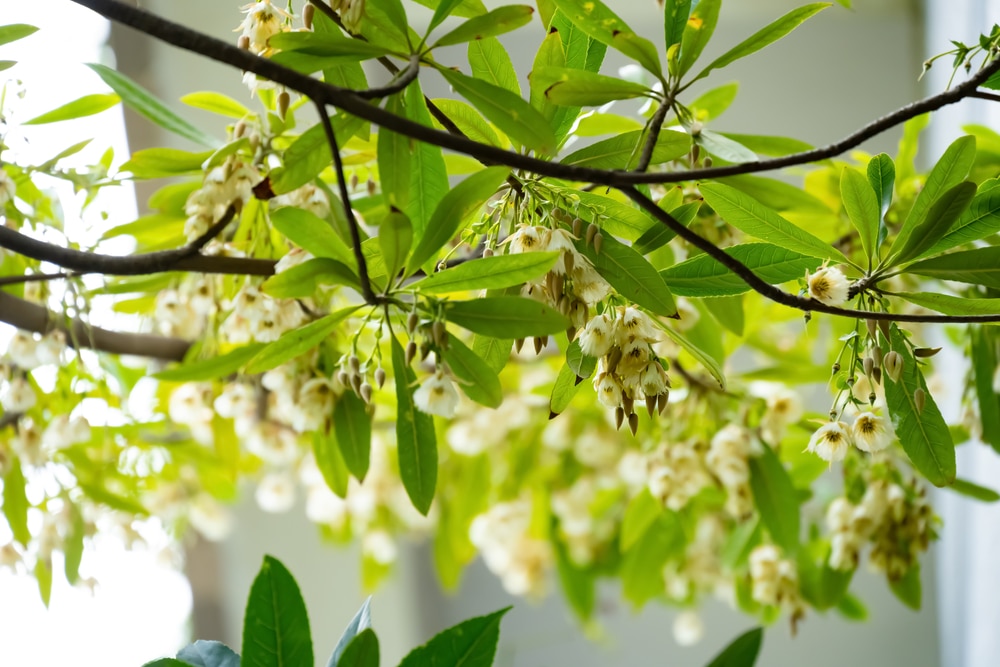Because of its versatility, the Japanese Blueberry Tree is a very popular plant that is widely planted in many countries around the world. Native to Asia, specifically China and Japan, this plant is not only popular for resilience.
It has a dense growth habit that reaches up to 720 inches and is often used for hedge material. It also goes by the name Green Emerald Blueberry because of its lush foliage that is emerald green in color. This tree is evergreen, meaning it will keep its leaves year-round.
However, in colder climates where temperatures dip below freezing, the tree may lose its leaves temporarily until things warm back up again.
| Botanical Name | Elaeocarpus decipiens |
| Common Name | Japanese Blueberry, Green Emerald Blueberry |
| Plant Type | Perennial |
| Flower Color | White |
| Size When Mature | 720 Inches |
| Bloom Time | Spring |
| Sun Requirements | Full Sun |
| USDA Hardiness Zones | 9-11 |
| Soil PH Range | 6.1-7.3 |
| Soil Type | Neutral to Slightly Alkaline, rich, well-draining |
| Water Needs | Medium |
| Native Area | China and Japan |
What You Need to Know About Japanese Blueberry
The Japanese Blueberry Tree exudes a certain charm with its foliage that’s a combination of tropical and Christmas-like. It produces dainty white fragrant flowers that bloom in clusters during spring. These flowers give way to small, round berries that start out green and ripen to a deep blue color. However, these are not edible though birds may occasionally eat them.
This tree can thrive with very low maintenance, making it an ideal plant for those who don’t have a lot of time to spare for gardening. It can be left to grow on its own without any pruning as it achieves its narrow form, although you may want to do some shaping if you want it to take on a certain form. It is not known to be toxic but it is better to be safe than sorry so keep it away from pets and small children.
How to Care for Japanese Blueberry

Here’s everything you need to know about growing and caring for a thriving Japanese Blueberry:
Light
This evergreen tree requires full sun to partial shade. It grows best with 6 or more hours of direct sun daily. It is generally a big plant so growing it indoors might be difficult to do. If so, make sure that it gets plenty of bright light near a window.
Water and Soil Needs
Regular watering is needed although it is not advisable to keep the soil too moist. With fairly regular irrigation, the tree will do just fine. However, the roots should not be sitting in water for too long as this will encourage root rot.
The ideal soil type for this plant is rich, well-draining loam although it can also tolerate clay and sand. Amend the soil with some organic matter if needed to improve drainage. It grows best in neutral to slightly alkaline with a pH level of 6.1 to 7.3
Temperature Requirements
This tree has very limited tolerance to cold and should only be grown in USDA hardiness zones 9 to 11. In areas where the climate is too cold, the plant might get damaged.
Fertilizer
The best fertilizer to use on a Japanese Blueberry is a top-quality granular fertilizer. It is recommended to feed them during the growing season in spring as they grow very slowly. You can also feed them during the summer and fall to further help with their growth.
Common Diseases
This tree may be easy to grow but it is receptive to a lot of pests and diseases so this is where you might need to focus extra. Check for sooty mold-producing soft scales as well as other sap-sucking insects. These pests can cause extensive damage to your tree by stressing it and disrupting its growth. Luckily, they can be controlled by using horticultural oils or insecticidal soap. It is important to take action immediately as soon as you see any sign of infestation.
Another common problem that this tree face is chlorosis. This is the yellowing of the leaves which is caused by a lack of chlorophyll. There are several known causes why this happens. Some of the possible reasons may be poor and improper drainage, damaged and compacted roots, high alkalinity of the soil, and nutrient deficiencies. To solve this problem, you can try to improve the drainage, loosen the compacted soil, or amend the soil with organic matter.
Japanese Blueberry Propagation
To propagate, it is ideal to use seeds or semi-hardwood cuttings. In using seeds, sow them indoors before the frost. The germination process can take several weeks or even months so be patient.
To propagate using semi-hardwood cuttings, choose stems that are 6 to 8 inches long and are from the current season’s growth. After soaking it for one hour, place the cuttings. Ensure the soil is loose and moist, and that there is good drainage. Place it in an area with good ventilation.

